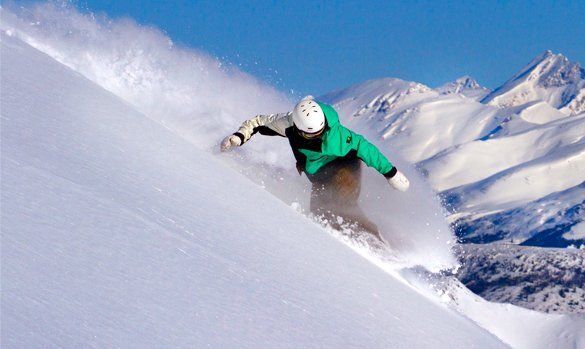BANFF NATIONAL PARK, ALBERTA -- The Canadian Tourism Commission (CTC) unveiled the latest 28 tourism businesses joining the Canadian Signature Experiences Collection this week. Among the list is the Cave and Basin National Historic Site Discover Tour.
The timing of this announcement was impeccable because I had just returned from Banff, and was able to lay eyes on the park for the first time in my life. I was struck by this magnificent attraction that's little known despite being in one of Canada's most globally beloved national parks. I remember parking my car, looking around at the mountain landscape and thinking, "Geez...even the parking lot is spectacular."
It's a short walk up a paved road past an information and souvenir shop to the front door. One of the first things you'll notice is the strong smell that will remind you of rotten eggs, due to the sulphurous hot springs. It's not an overwhelming odour, but you're sure to see at least some visitors scrunching their faces as their noses struggle to get used to the smell.
I missed my guided tour so I decided to walk around and see this park for myself. The second thing you'll probably notice after the unmistakable smell of sulphur is the information placards and pictures in the main hallway, just before you go into the tunnel to see the cave.
There's one picture in particular that caught my eye. It tells the story of this park and gives you a sense of history. Entitled "The Making of a Myth," it shows three railway workers "discovering" the dark, muggy cave in the fall of 1883 from a vent hole on top of the cave. I use the word "discovering" lightly in this case because the First Nations people knew about the spring and were using it long before the railway workers discovered it. The picture depicts the three men entering from the top of the cave because that was the only way in until the tunnel was blasted out to improve access in 1886.
A Shimmering Dream Come True
One of those men in the picture was Frank McCabe, who said, "It was as if one was in a chamber of jewels. In all my wanderings I have seen nothing like it. It is like some extravagant shimmering dream."
Shimmering dream...couldn't have said it better myself. When you walk into the cave that sense of history is alive and vibrant. As I moved slowly down the dark, low, crooked tunnel into the cave and breathed in the sulphur-saturated air, I could imagine McCabe coming down the roof of the cave and feel his excitement as my eyes saw this sight for the first time.
Outside is the basin, an outdoor emerald-coloured mineral pool, home to the unique and endangered Banff Springs Snail, a tiny animal no bigger then the head of a pencil eraser and found nowhere else in the world. This is one of the biggest reasons why you can't swim here. Public relations and communications officer Michelle Macullo explained that several other animals from grizzly bears to water snakes and water fowl can be found at Cave and Basin, just 2.1 kilometres (1.3 miles) from the centre of town.
Story by Rod Charles, Vacay.ca writer. To read the rest of the story on Vacay.ca, click here.
ALSO ON HUFFPOST:
